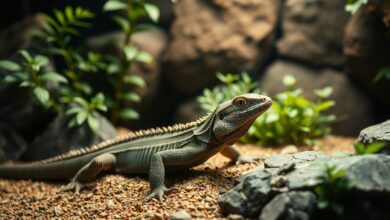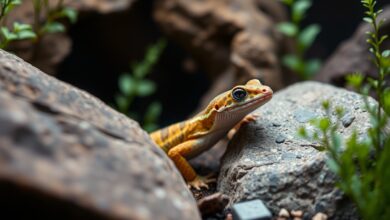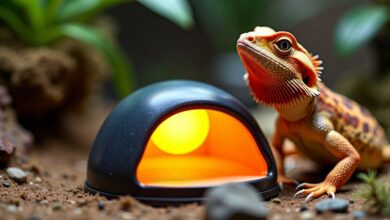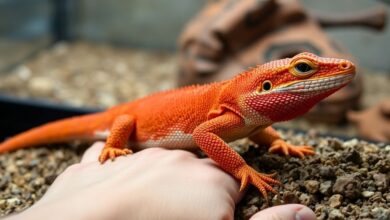Axanthic Ball Python – Stunning Features and Care Tips

Just like all reptiles, Axanthic Ball Pythons require specific care to thrive and display their stunning features. This captivating morph, characterized by its lack of yellow pigmentation, presents a beautiful contrast of grey and black, making it a standout choice for any snake enthusiast. Understanding their habitat needs, feeding requirements, and health considerations is vital for maintaining your snake’s well-being. In this blog post, you’ll discover important insights and tips to help you become a knowledgeable owner of this exquisite reptile.
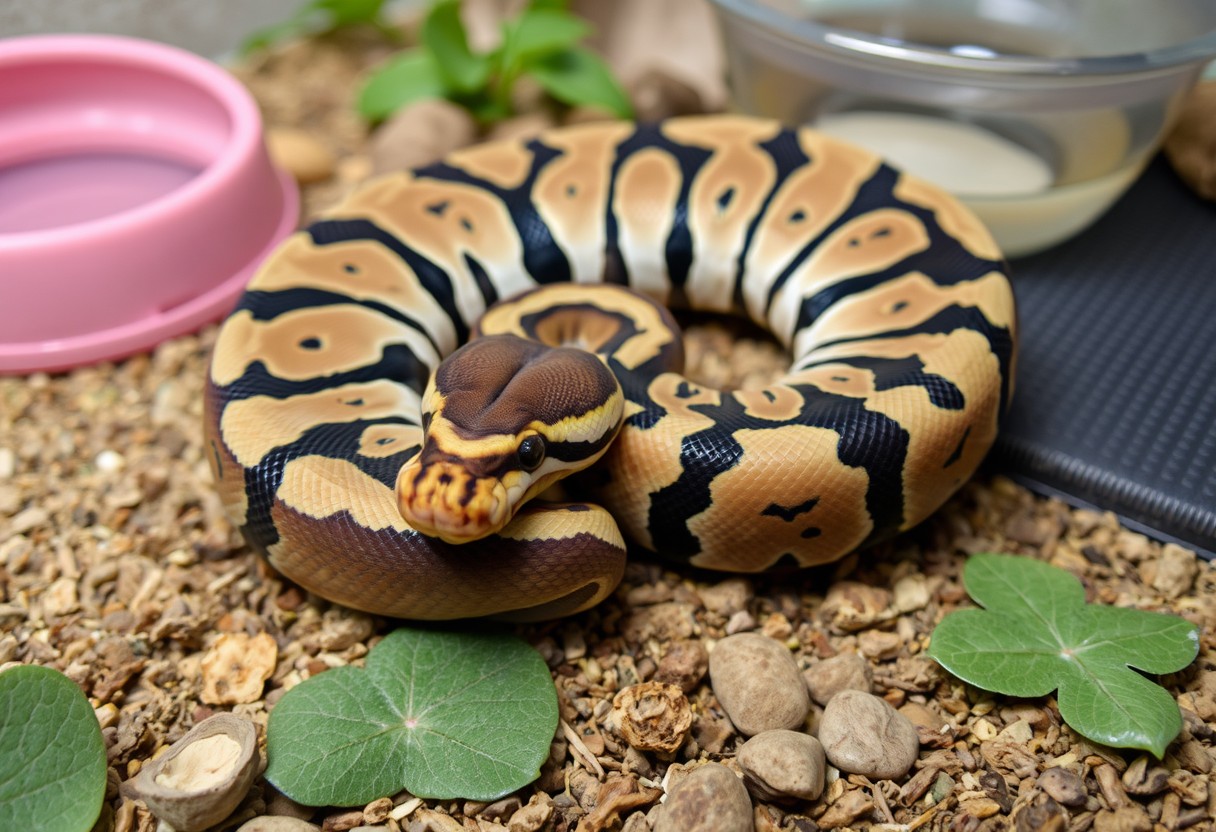
Key Takeaways:
- Unique Appearance: Axanthic Ball Pythons are known for their striking visuals, showcasing a distinct absence of yellow and red pigments, which enhances their contrasting black and white patterns.
- Care Requirements: Proper habitat setup, temperature regulation, and humidity levels are crucial for the health and well-being of Axanthic Ball Pythons, ensuring they thrive in captivity.
- Feeding Habits: A balanced diet consisting of appropriately sized rodents is vital, along with regular feeding schedules to maintain their health and growth.
Origins and Genetics
The Axanthic Ball Python is a unique morph that has gained popularity among reptile enthusiasts for its stunning appearance. This morph is primarily characterized by the absence of yellow and red pigments, resulting in a striking gray, black, and white coloration. The genetics behind this morph can be traced back to selective breeding practices that aim to enhance its distinctive features while maintaining the overall health and vitality of the species.
History of the Axanthic Ball Python
Axanthic Ball Pythons made their debut in the late 1990s when breeders discovered this captivating morph. Initially introduced into the reptile trade, it brought a refreshing variation to the established color palette. The genetic lineage of the Axanthic was carefully studied, leading to a greater understanding of how selective breeding could enhance this unique trait. As a result, breeders became more dedicated to perfecting this color morph, making it a sought-after choice among collectors.
Genetic Traits
Below the surface, the Axanthic Ball Python’s striking appearance is the result of a lack of certain pigments, specifically yellow and red, that contribute to the typical coloration found in other morphs. This unique genetic makeup allows for a more subdued yet eye-catching contrast between the black and gray tones, setting it apart in the world of ball pythons.
And while the Axanthic morph captivates with its stunning visuals, you should be aware of how its genetic traits also influence its care requirements. The absence of specific pigments can lead to greater sensitivity to heat and lighting, so it’s vital to maintain an appropriate habitat to ensure their health. This morph is not only visually appealing but also represents a significant advancement in the field of selective breeding, showcasing the importance of understanding genetics in reptile husbandry.

Physical Characteristics
Clearly, the Axanthic Ball Python is a captivating morph, primarily defined by its stunning grey, black, and white coloration. This unique palette sets it apart from other morphs, allowing you to appreciate the subtle variations in pattern that can differ among individual snakes. Each Axanthic can showcase distinct markings, making them intriguing pets for enthusiasts. (Choosing the right Axanthic for your collection can enhance your experience.)
Coloration and Patterns
Below, the Axanthic Ball Python exhibits a remarkable blend of grey, black, and white hues that are both striking and visually appealing. The patterns can range from bold to nuanced, with unique shapes that differ from one individual to another, making each snake a one-of-a-kind specimen. (Finding an Axanthic that matches your aesthetic preference can be an enjoyable task.)
Size and Growth Rate
Among Axanthic Ball Pythons, the average size hovers around 3 to 5 feet in length, with most reaching adulthood within 3 to 5 years. Factors influencing their growth include diet and habitat conditions, which play critical roles in determining their overall health and size. (Offering a balanced diet and suitable environment will promote optimal growth.)
Also, the growth rate of your Axanthic Ball Python can vary depending on its feeding schedule and genetics. Proper nutrition and a warm, suitable habitat can significantly enhance their growth, enabling them to reach their potential size effectively. (Ensuring you provide adequate care will lead to a healthier, happier snake.)
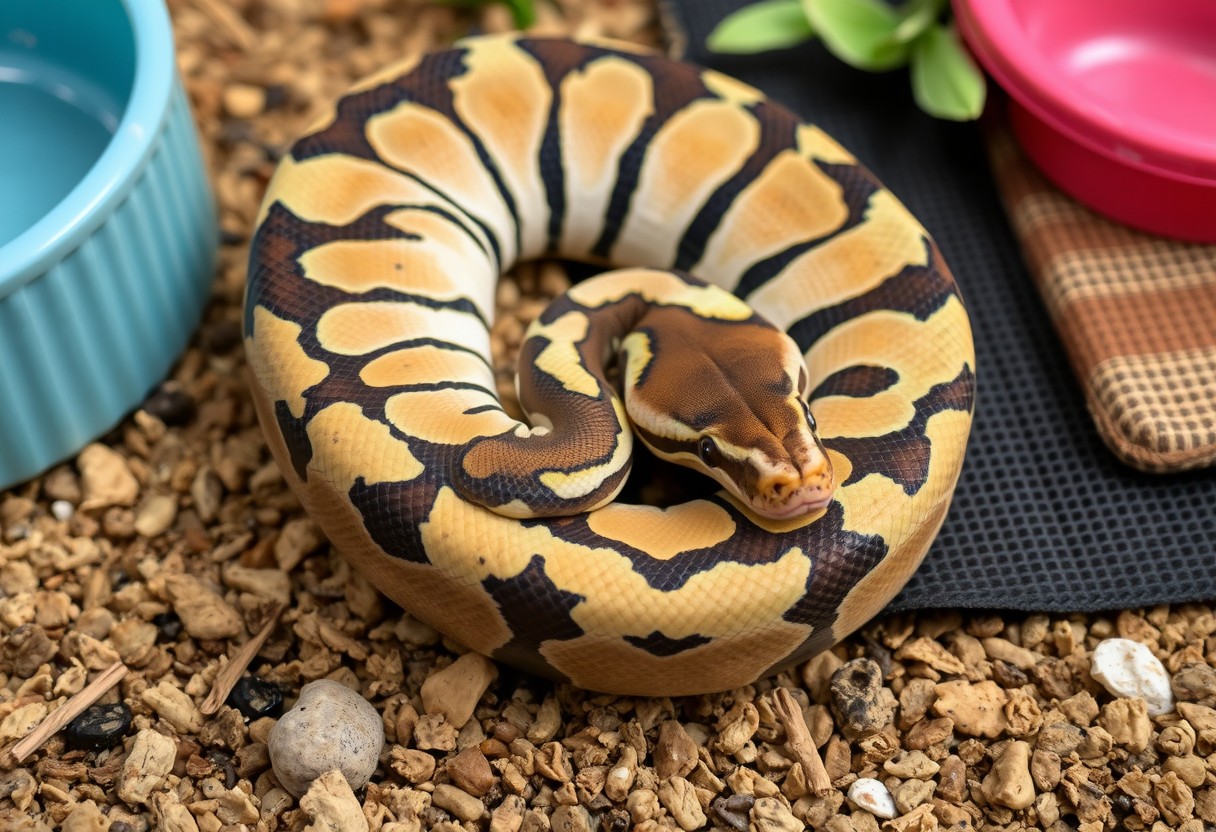
Housing Requirements
Unlike many other snake species, Axanthic Ball Pythons require specific housing conditions to thrive. You should provide a spacious enclosure that accommodates their adult size, typically around 4 feet in length. A glass or plastic terrarium designed for reptiles serves well. Ensure the substrate is appropriate for their habitat—options such as aspen shavings, coconut fiber, or paper towels are suitable. Equip the enclosure with a heat source like a heat mat or ceramic heater, and maintain humidity levels with water bowls or misting systems.
Enclosure Setup
An ideal enclosure for your Axanthic Ball Python should be at least 40 gallons in size, with more space for larger individuals. Choose a substrate that is easy to clean and comfortable for your snake, like aspen shavings or coconut fiber. You will need a heat source to create a temperature gradient within the enclosure; consider a heat mat or overhead heat lamp. Additionally, integrate humidity control through a water dish and periodic misting to maintain humidity levels between 50-60%.
Environmental Conditions
Before setting up your Axanthic Ball Python’s habitat, you should establish the correct temperature, humidity, and lighting. Temperatures should range from 75-80°F on the cool side to 88-92°F on the warm side. Maintain humidity between 50-60% to ensure proper shedding and health. Lighting is not imperative, but a light cycle mimicking natural day and night may benefit their health.
To optimize your Axanthic Ball Python’s environment, ensure your hot spot temperature consistently reaches 88-92°F, while the cool end remains around 75-80°F. The humidity level is vital: keep it between 50-60% for proper shedding and overall health. Use a reliable thermometer and hygrometer for monitoring. Adequate lighting is less imperative, but providing a natural light cycle can enhance your snake’s well-being, mimicking their natural habitat and supporting their behavioral needs.
Feeding and Diet
Many owners find that feeding their Axanthic Ball Python requires careful attention to its dietary needs to keep it healthy and thriving. This species generally thrives on appropriately sized rodents, such as mice or rats, which should be offered based on their size and age every 5 to 14 days, depending on the individual snake’s feeding habits and metabolic rate.
Nutritional Needs
One important aspect of your Axanthic Ball Python’s diet is to ensure it is receiving a balanced source of nutrients through rodent prey. Adult snakes typically require larger prey, while juveniles may need smaller ones; offering meals that are around 1.5 times the width of your snake’s body every 7-10 days is ideal (this helps prevent obesity).
Feeding Techniques
Techniques for feeding your Axanthic Ball Python can involve a few helpful strategies to promote a successful feeding experience. Gently warming the prey and using feeding tongs can help mimic live movement, enticing your snake to eat, while establishing a consistent feeding schedule can aid acclimation (feeder timing can influence their acceptance).
In addition, observing your snake’s behavior during feeding can help identify any common issues it may face, such as refusals or stress. If feeding problems occur, consider adjusting the type or size of the prey, as well as ensuring that your snake feels safe and comfortable in its environment. A suitable feeding routine promotes a healthy and stress-free experience, enhancing your bond with your snake and ensuring long-term wellness (creating a secure setting for feeding is crucial).
Handling and Socialization
Once again, establishing a routine for handling your Axanthic Ball Python is imperative for both you and your pet’s comfort. Regular, gentle handling helps your snake become accustomed to your presence and will reduce any anxiety during maintenance tasks. It’s important to always approach your snake calmly and allow it to explore your hands before lifting it to build a trusting relationship.
Proper Handling Techniques
Above all, ensure you support your Axanthic Ball Python’s body fully while handling. Use both hands to cradle its body and avoid holding it too tightly; this minimizes stress for your snake. Always handle your python in a quiet environment to prevent startling it. (Taking your time with handling sessions is key to a successful bond.)
Socialization and Behavior
Below the surface of its calm demeanor, the Axanthic Ball Python can exhibit charming social behavior through gentle interactions. Fostering trust is vital, as it encourages your snake to feel safe around you. Gradually increasing handling sessions will help your Ball Python become more comfortable, laying the groundwork for a positive pet-owner relationship. (The sooner you start, the better your connection will grow.)
And as you engage in socialization, it’s imperative to watch for subtle signs of stress in your Axanthic Ball Python. Create a routine that includes short and gentle handling sessions, allowing your snake to acclimate to your presence. This approach not only enhances your bond but also promotes a healthy mindset for your reptile. In general, understanding your snake’s body language can make a significant difference in your interactions, ensuring a happy and healthy pet.
Common Health Issues
All Axanthic Ball Pythons are susceptible to various health issues, which can impact their well-being if not managed promptly. Common problems include respiratory infections, indicated by wheezing or open-mouthed breathing, mites, which appear as tiny black dots on the skin, and stomach parasites, shown by weight loss or abnormal stool. To prevent these issues, maintain a clean environment, monitor humidity and temperature, and provide a balanced diet. (Addressing health problems early can foster a better quality of life for your pet.)
Identifying Health Problems
For your Axanthic Ball Python, it’s vital to know the signs of health problems. Look out for changes in appetite, lethargy, and unusual shedding patterns. Swelling, discoloration, or abnormal behavior can also indicate underlying issues. Regular monitoring is vital to catch any abnormalities early. (Being proactive in identifying health issues can save your pet from prolonged suffering.)
Veterinary Care
Issues regarding veterinary care should not be overlooked. Seek professional help if you notice any distressing symptoms, or consider scheduling routine check-ups every six months. Finding a reptile-savvy vet is key; search online directories or ask fellow reptile owners for recommendations. (Establishing a relationship with a vet experienced in reptile care can significantly enhance your pet’s health.)
Another important aspect of health care for your Axanthic Ball Python involves routine wellness checks, which can help in early disease detection. Regular visits enable your vet to assess your pet’s weight, skin condition, and overall health—vital factors for a long and healthy life. Ensure you take your snake to the vet if it shows any sign of illness, as timely action can make a significant difference. (Prioritizing veterinary care is vital in ensuring your snake’s longevity and vitality.)
Summing up
Following this guide on Axanthic Ball Pythons, you now have a solid understanding of their stunning features and necessary care tips. These captivating snakes require specific environmental conditions and proper diet to thrive in your care. For further insights, consider exploring the detailed information on Black Axanthic? – Ball Pythons. With the right knowledge and commitment, you can enjoy a rewarding experience with your Axanthic Ball Python.
FAQ
Q: What are the distinguishing features of an Axanthic Ball Python?
A: Axanthic Ball Pythons are recognized for their unique coloration. They exhibit a lack of the yellow pigmentation that is commonly found in other Ball Python morphs, leading to a beautiful gray, black, and white coloration. Their scales shine with a subtle sheen that enhances their stunning appearance. The contrast between the dark and light shades can vary depending on the individual snake, but all Axanthic Ball Pythons share this striking and elegant appearance, making them highly sought after among reptile enthusiasts.
Q: What care requirements should I keep in mind for an Axanthic Ball Python?
A: Providing the right care for an Axanthic Ball Python is vital for their health and well-being. They require a habitat that maintains a proper temperature gradient, with a warm side of 85-90°F and a cooler side around 75-80°F. Humidity levels should be kept between 50-60%, which can be achieved through appropriate substrate and regular misting. Their enclosure should also include hiding spots to help them feel secure. A varied diet of appropriately sized rodents is vital, and feeding schedules can vary depending on their age and size. Regular cleanings of the enclosure are also important to prevent the buildup of waste and promote a healthy environment.
Q: How can I handle and socialize with my Axanthic Ball Python?
A: Socializing with your Axanthic Ball Python can enhance your bond and build trust between you and your pet. It’s best to start handling them after they have settled into their new environment, which can take several weeks. When handling, use both hands to support the snake’s body and avoid sudden movements. Start with short handling sessions to acclimate them to your presence. Over time, as they become accustomed to being handled, you can gradually increase the duration. Always be mindful of their body language; if they show signs of stress (like trying to escape or becoming very active), it’s best to return them to their enclosure. Regular, gentle interactions will help your Axanthic Ball Python become more comfortable around people.


